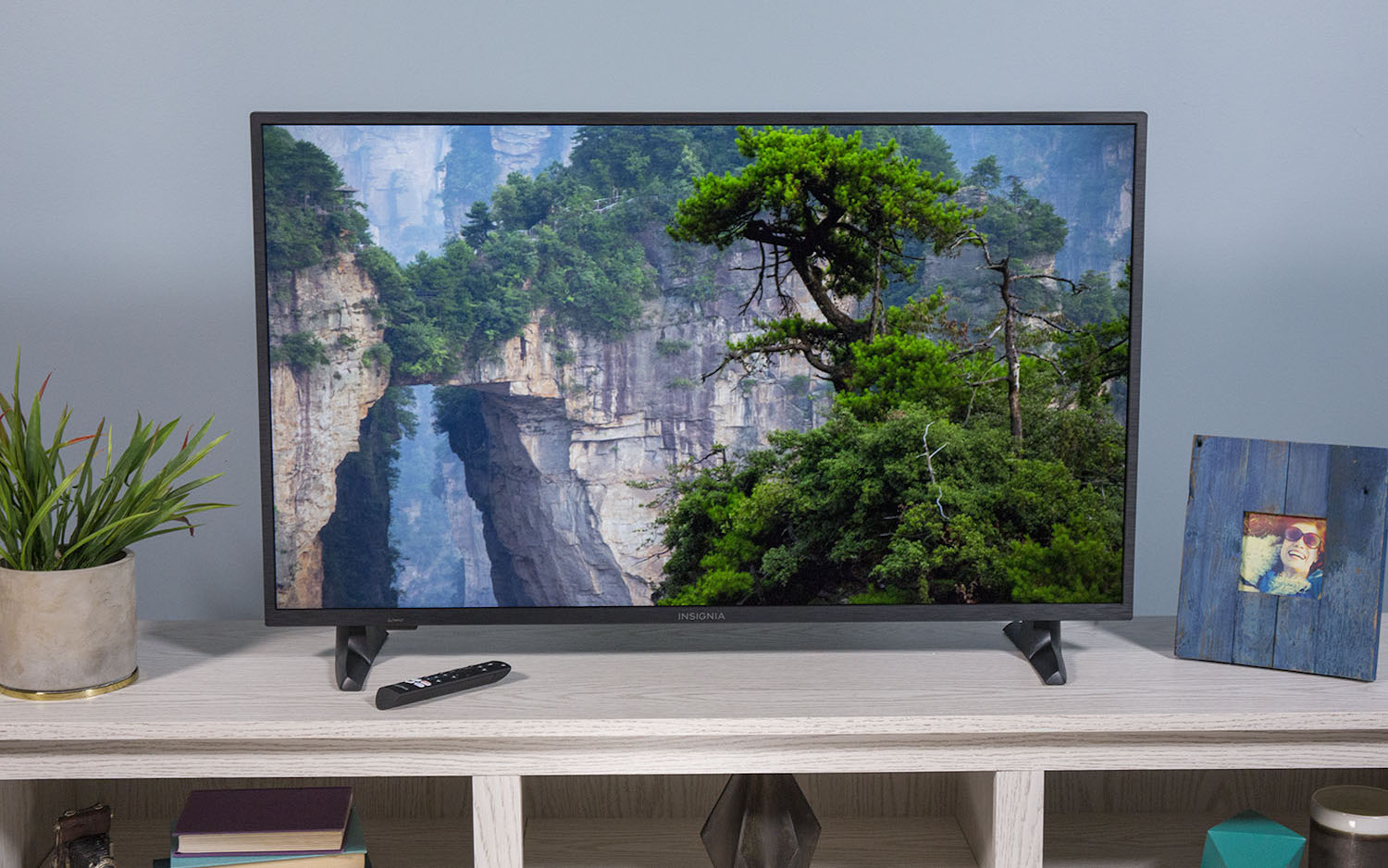Tom's Guide Verdict
The Insignia Fire TV Edition is a solid smart TV, with good picture quality and sound. It's the best Amazon-powered TV yet.
Pros
- +
Affordable 4K smart TV
- +
HDR support
- +
Alexa voice assistant built in
Cons
- -
No far-field mics for Alexa
- -
Annoying ads
Why you can trust Tom's Guide
The Insignia 43-inch 4K Fire TV Edition ($299 as tested) is the third Amazon-powered smart TV we've reviewed, but it's the first we'd recommend and is one of the best TVs overall for those on a budget.
We've seen Amazon's capable Fire TV OS hampered by bargain-bin 4K TVs from brands like Westinghouse and Toshiba. So, it's fairly refreshing to see Best Buy's Insignia brand stepping up to offer a decent TV to match the quality of the software. This set is not perfect by any means, but the Insignia is the best Fire TV we've seen, and it delivers a good picture for a smaller set. Although its lineup includes one of the best 55-inch TVs, too.
Editors' Note: Amazon and Google have made up, and YouTube is now available on Amazon Fire TVs, fixing one of our biggest problems with the Amazon-powered smart TVs.
Insignia 43-Inch 4K Fire TV Edition (NS-43DF710NA19) Specs
| Price | $299 |
| Screen Size | 43 inches |
| Resolution | 3840 x 2160 |
| HDR | HDR10 |
| Refresh Rate | 60 Hz |
| Ports | 3 HDMI, 1 USB |
| Audio | 2 Channels, 8 Watts |
| Smart TV Software | Amazon Fire TV, with Alexa |
| Size | 38.2 x 22.5 x 3.2 inches [w/o stand] |
| Weight | 19.6 pounds [w/o stand] |
The 43-inch set measures 38.2 x 22.5 x 3.2 inches without the stand and weighs a manageable 19.6 pounds, making it small enough for one person to assemble and move.
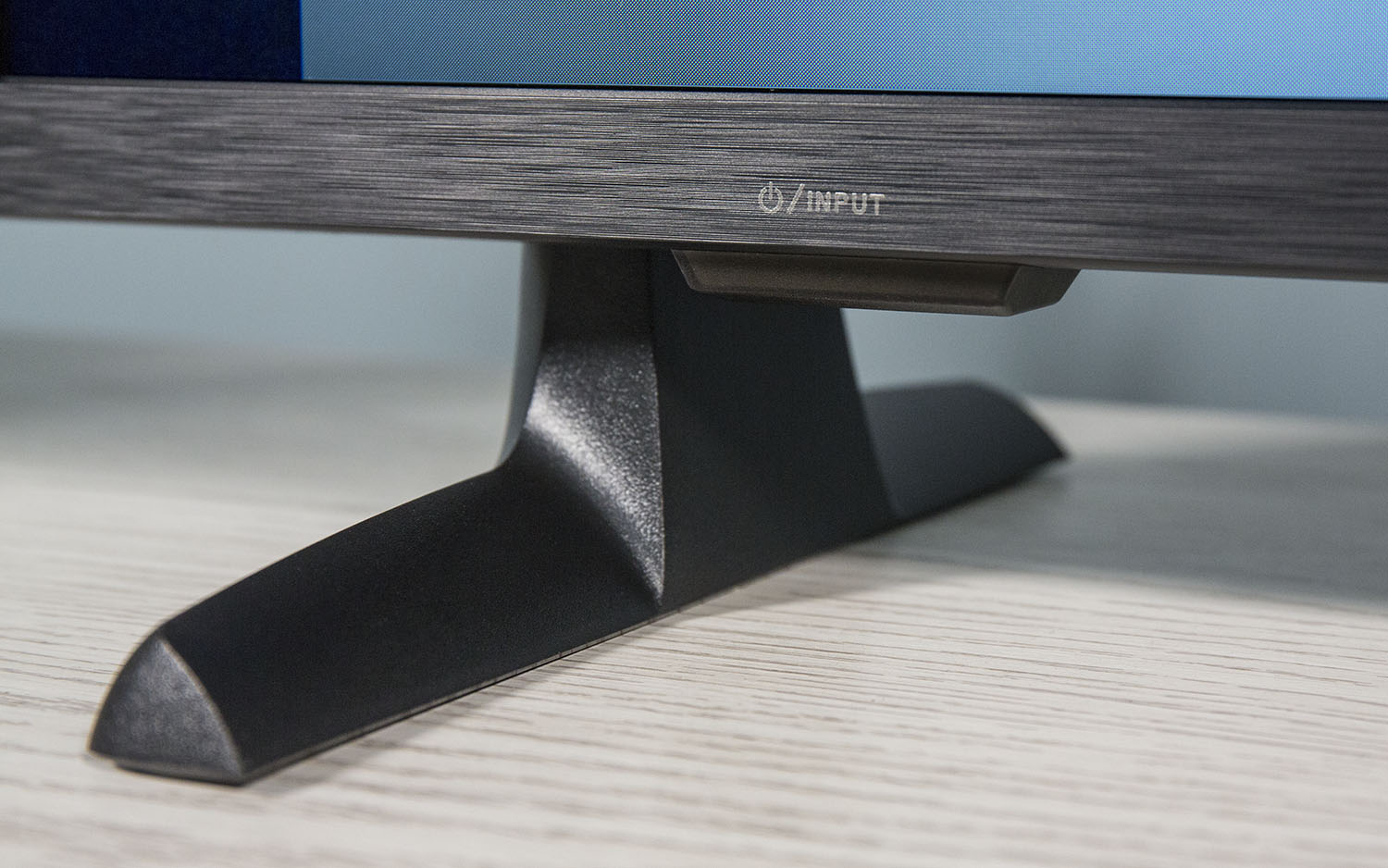
The attached stand consists of two feet, and while the plastic feet are a little chunky, they sit perpendicular to the display instead of at the awkward angled position that so many inexpensive TV designs prefer. It's a small improvement, but for a low-priced TV, even small touches make a difference.
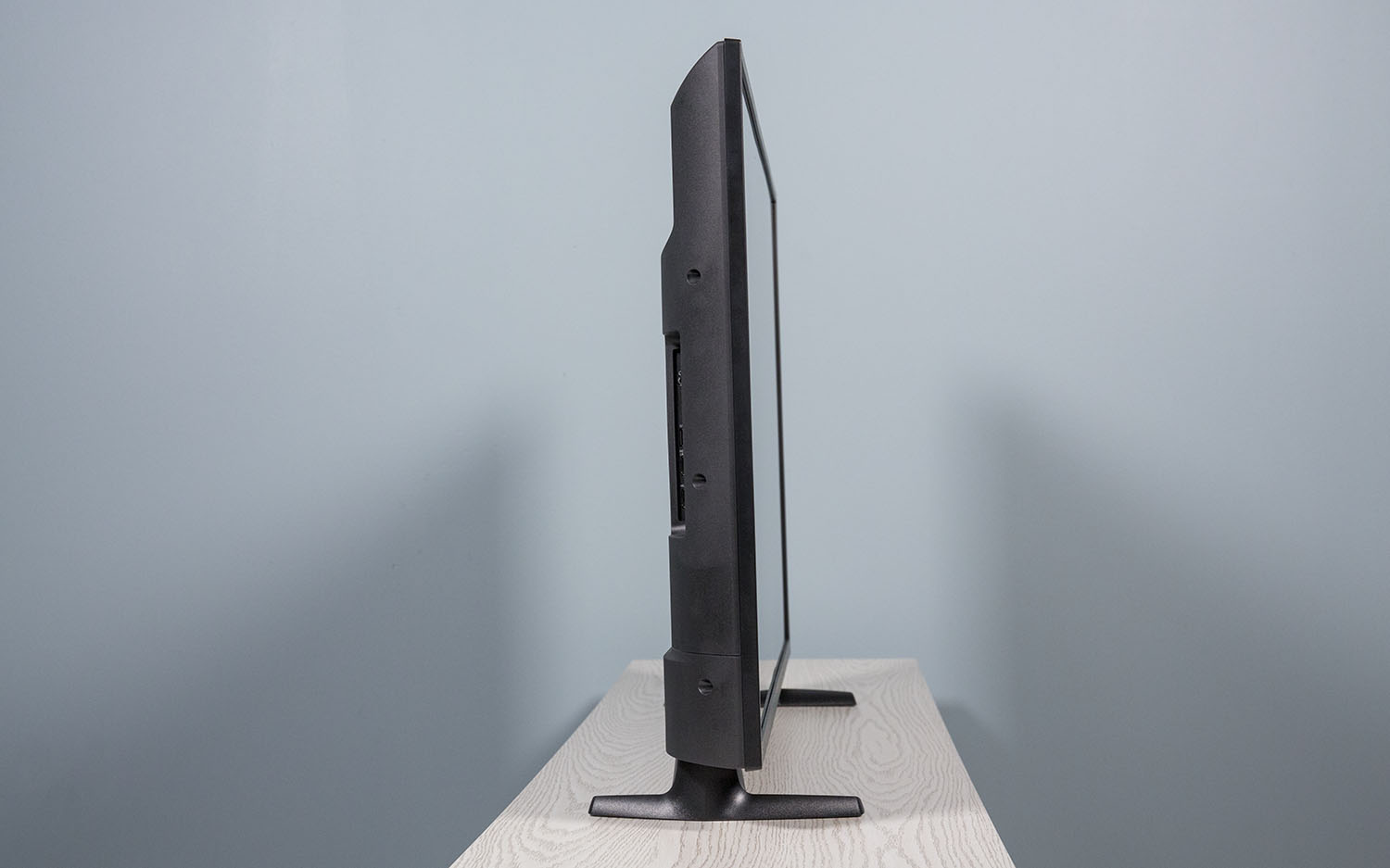
The TV itself is fairly thick, with a rounded chassis. On the back panel is a four-hole pattern for a standard 200 x 200-millimeter VESA mount.
Ports
On the left hand side of the TV, you will find two panels of inputs, one that faces left and includes two HDMI ports (one of which has ARC support), a single USB port, and a headphone jack for audio output. A second, rear-facing panel offers a third HDMI port, an RF connector for antenna and cable, composite video input, digital optical output for surround sound, and an Ethernet port.
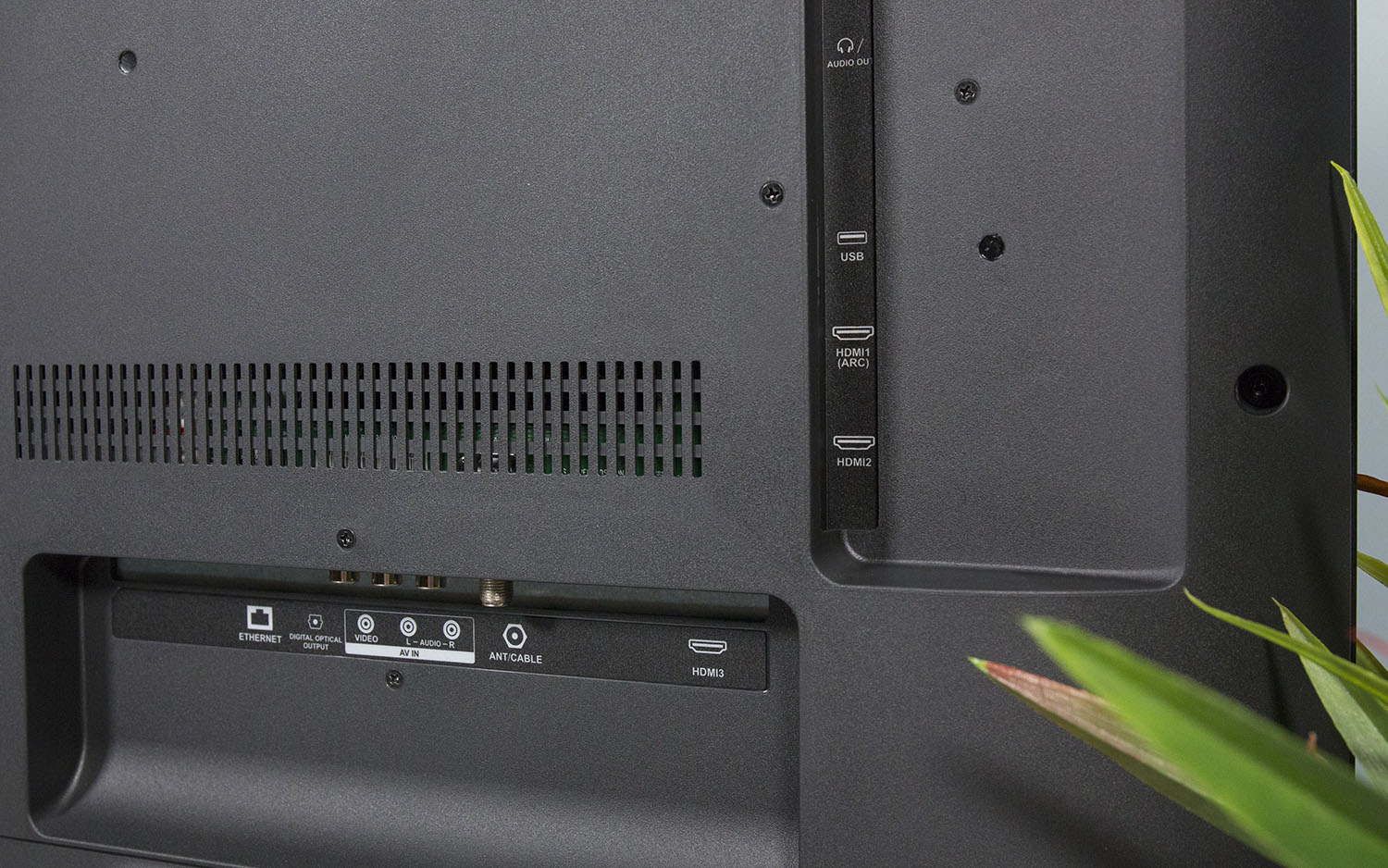
For wireless connectivity, the set has 802. 11ac Wi-Fi.
Performance
Looking over the specs for the Insignia — a 43-inch 4K display, a 60-Hz refresh rate and limited HDR capability — I wasn't too excited about the prospect of another mediocre Amazon TV. However, the Insignia impressed me right out of the gate. Watching scenes from Spider-Man: Homecoming, we saw vibrant colors and fairly smooth action for a 60-Hz panel. In a scene in which Spider-Man climbs the Washington Monument, the bright blue skies and green lawns of the National Mall looked great, and the reds and blues of Spidey's suit looked true to life. Night shots of a Marvel-inflected Manhattan offered bright city lights, especially on Avengers Tower.
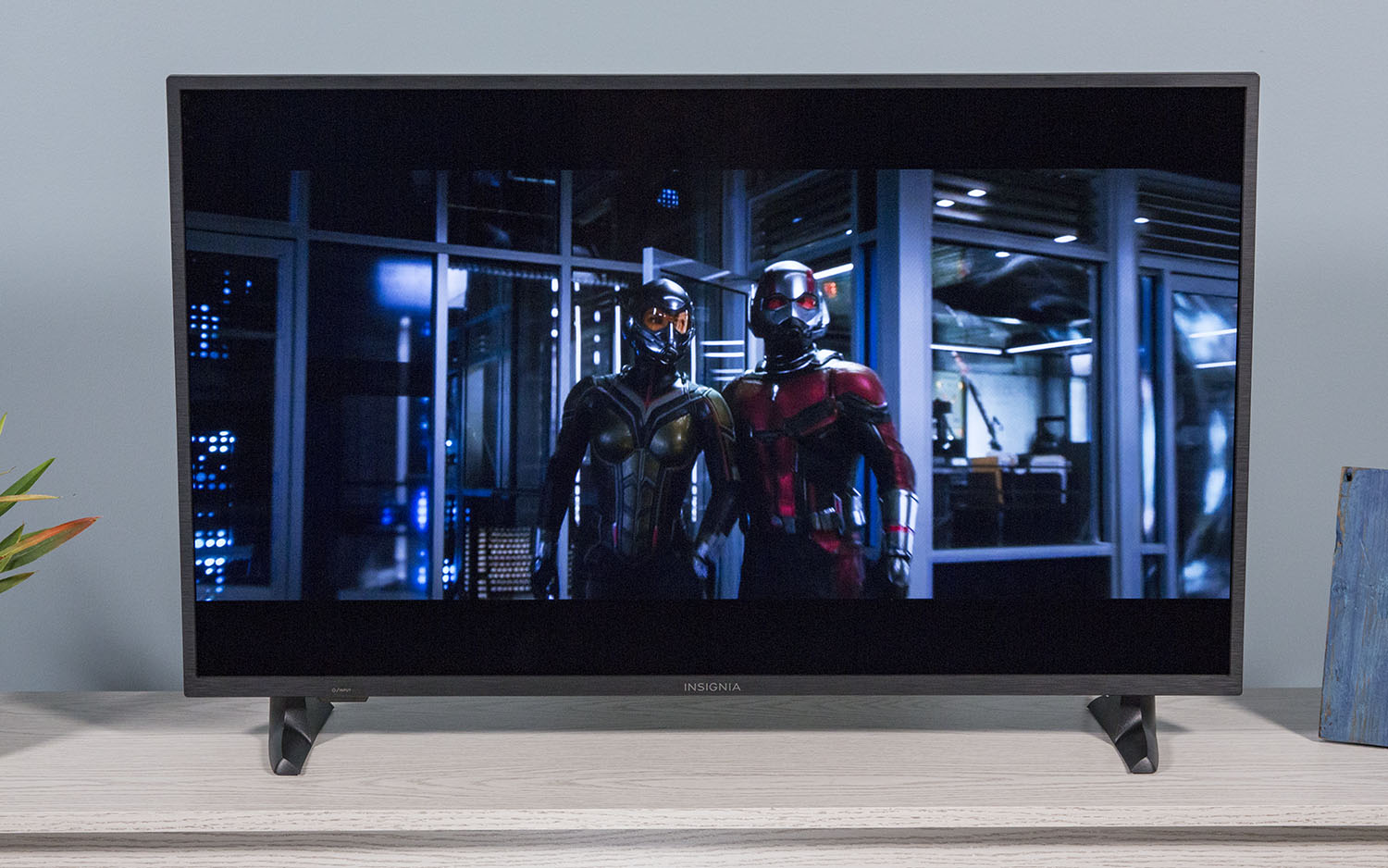
More-demanding tests proved that this good first impression wasn't a fluke. In Blade Runner 2049, close-ups of faces and hands demonstrated that the display handled flesh tones fairly well. It produced realistic shades and none of the banding we often encounter on less-expensive displays.
Watching scenes from Spider-Man: Homecoming, we saw vibrant colors and fairly smooth action for a 60-Hz panel.
HDR support is limited to HDR10, and without local dimming, the effect isn't as rich as you might expect from an HDR-capable TV. That said, in Blade Runner 2049, realistic light shone on bones presented on a lit examination table. In another scene, filled with deep shadows, unwanted light spilled over into portions of the screen that should have been nearly black, but no more so than we've seen on other sub-$500 TVs.
Viewing angles are pretty limited. Even when we sat directly in from of the screen, we saw minor color shifting at the right and left edges of the panel, a problem we generally encounter only on much larger displays. At 45 degrees, this discoloration covered half the screen, so sharing the screen with more than one person was tough.
The Insignia Fire TV is far from a perfect display, but as budget-friendly TVs go, it's pretty solid. Color reproduction is better than average, with the set achieving 99.4 percent of the Rec. 709 color space in our gamut measurements. That's slightly less than the results from the LG UK6300 (99.8 percent) and the TCL 43S517 Roku TV (99.8 percent), but it's significantly better than those from the other current Amazon smart TV, the Toshiba 55-inch Fire TV Edition (98.2 percent).
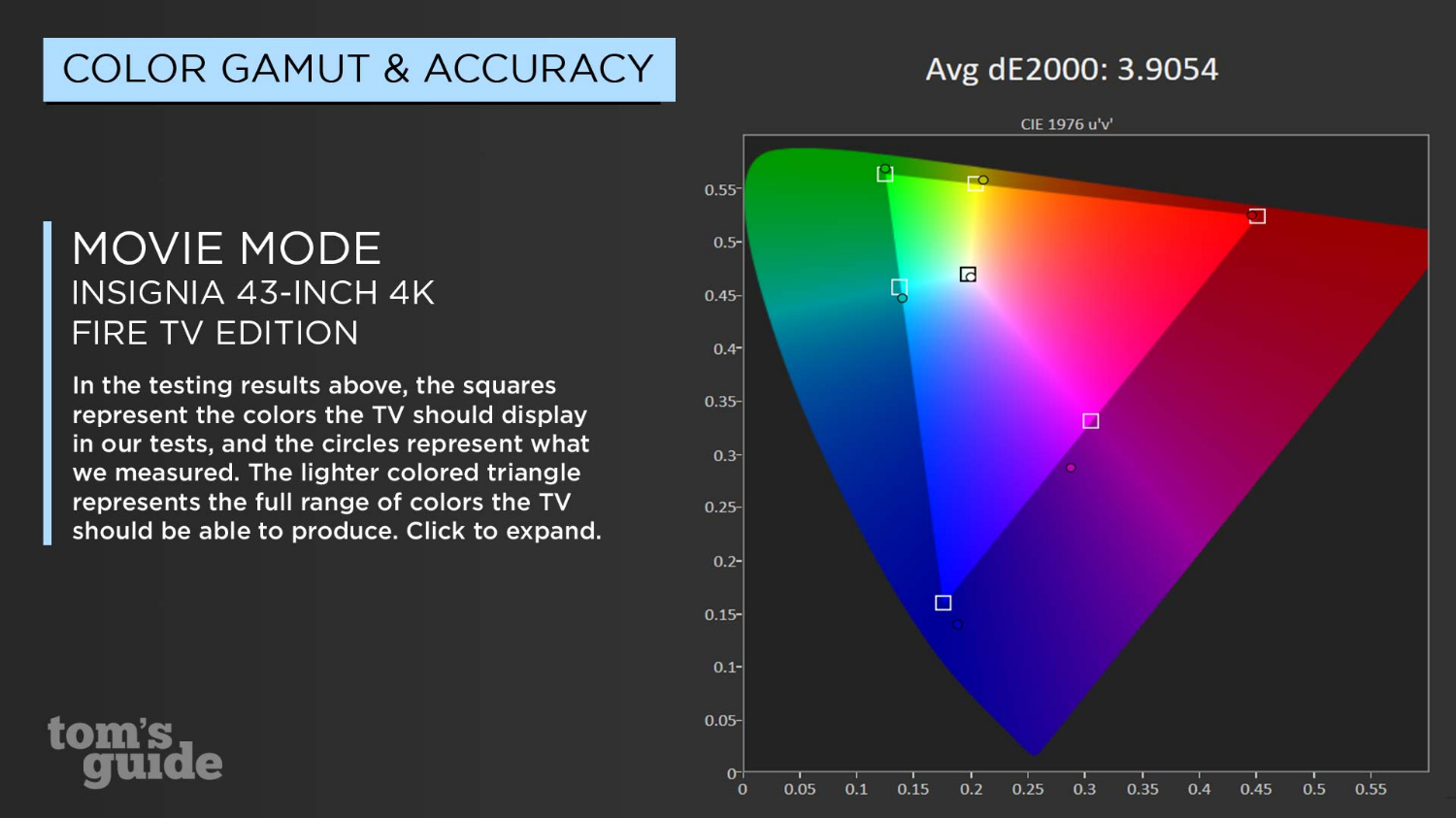
Color accuracy is better, as well. The Insignia Fire TV Edition registered a Delta-E rating of 3.9, which isn't spectacular; that score makes the Insignia slightly less accurate than the LG UK6300 (3.7) and decidedly worse than the TCL 43S517 Roku TV (1.7). But the Insignia still managed better color fidelity than the Toshiba Fire TV (5.05). That not only puts the Insignia among the average budget TVs, but it also means that it's the most color-accurate Amazon Fire TV we've tested, by a long shot.
MORE: Amazon Fire TV (2017) Review: Awesome Alexa, Awkward Design
When we plugged in our Xbox One X, the game console was ready to rock and roll. Not only did it support 4K gaming, but the Insignia also supports HDR and 10-bit color, which many inexpensive TVs do not. In actual gameplay, we were impressed to see that colors were vibrant and HDR lent a vividness to content that SDR-only sets can't replicate. In Assassin's Creed Origins, that meant lush greenery in a desert oasis and glowing torches when exploring underground tombs. In Forza Horizon 3, cars shone with a realistic gleam in the sunlight and taillights had a realistic glow in nighttime races. Visually, the set is well-suited to 4K gaming, but its tested lag time of 38 milliseconds may put off more-competitive gamers.
Audio
The small TV may be inexpensive, but it's largely free of the anemic audio that is so often heard in the sub-$500 range. The TV has a pair of 8-watt speakers, and while they aren't remarkably loud, they do offer fairly rich sound.
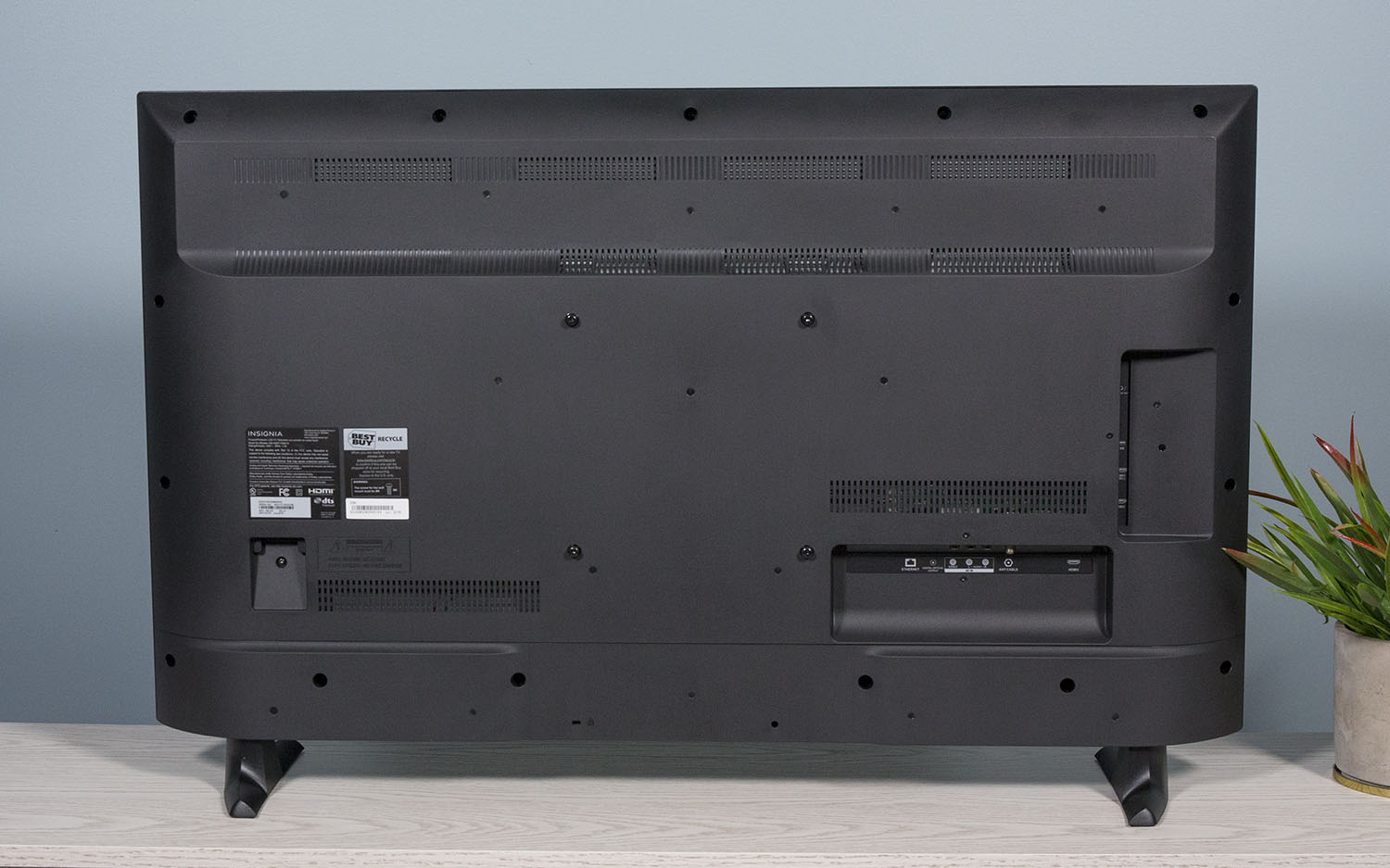
When I listened to Twenty One Pilots' "Jumpsuit," the 43-inch set managed to produce clean treble and an acceptable level of bass for a TV with no subwoofer. While you can fill the room with audio, doing so requires really cranking the volume, and at 40 percent volume, the bass took on a "womp-womp" quality.
On the whole, the audio quality is good enough, but we'd still recommend getting a soundbar.
Smart Features
Amazon's name is all over the Insignia's packaging and home screen, and with good reason. Where past Insignia models relied on Roku's smart TV operating system, this new model is all about Amazon's Fire TV OS.
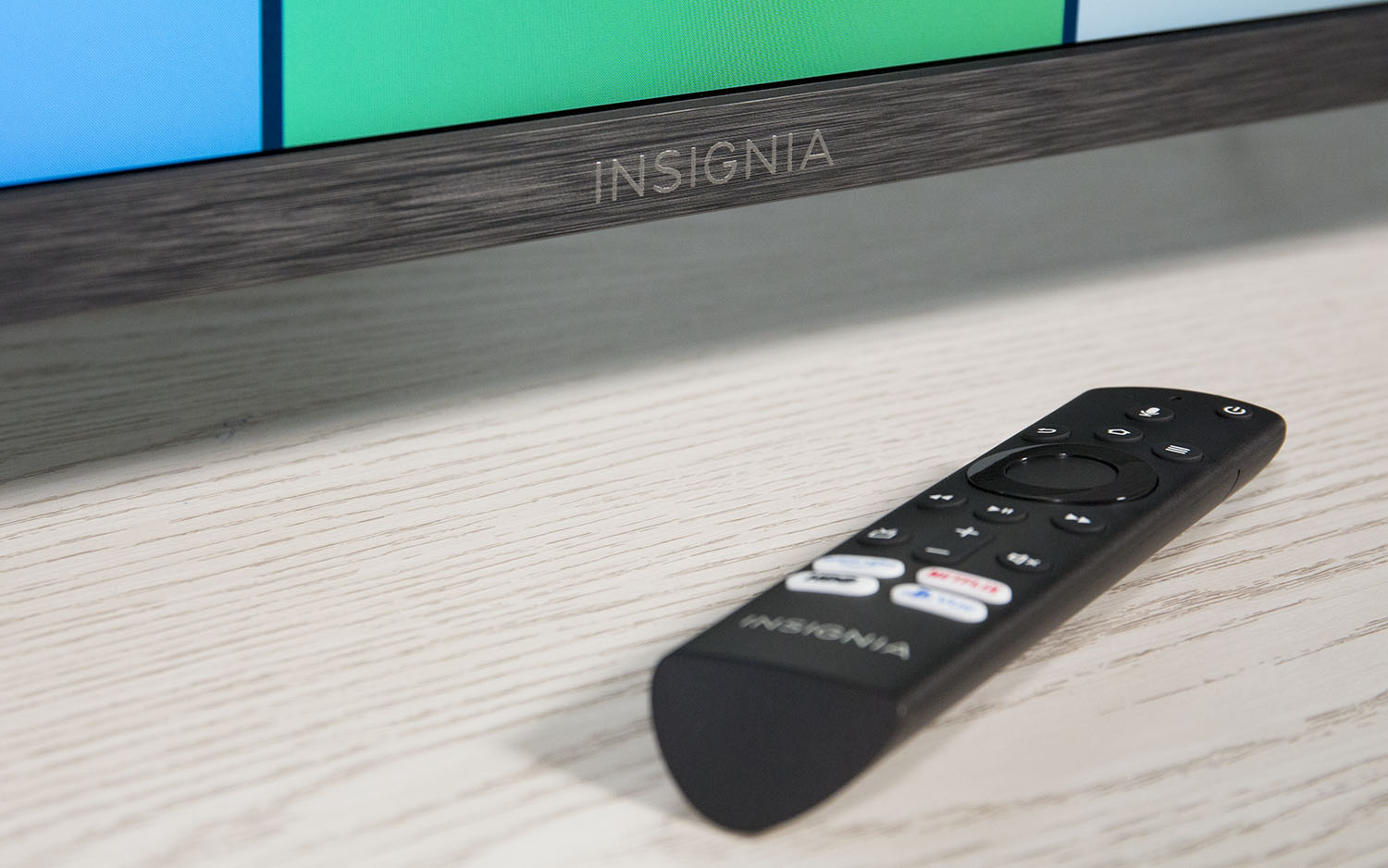
As smart TV platforms go, Fire TV is fairly capable. It offers most of the apps you'd expect, like Netflix, Hulu and HBO (both HBO Go and HBO Now), as well as the expected Amazon Prime Video. What this OS doesn't have is Google's streaming services, whether it's the Google Play Store for video or YouTube (and the many YouTube variations). While you can still enjoy YouTube through the TV's web browser, the official app is nowhere to be found.
Editors' Note: (Updated April 18, 2019) This issue has been fixed, with Amazon and Google publicly agreeing to work with each other again. This means Fire TVs will get an official YouTube app, along with other YouTube apps and services, such as YouTube Kids, YouTube Music and (most-critical for cordcutters) YouTube TV.
Having Alexa built in to the TV is also a major benefit of the Amazon-branded TV. With a mic built in to the remote and Alexa handling both content search and interactions with other smart home devices, it's like having an Amazon Echo without the extra device. Unfortunately, the TV lacks the far-field microphones that let you effortlessly speak aloud and have Alexa hear you. For that, you'll actually need to get an Echo or another Alexa device.
With a mic built in to the remote and Alexa handling both content search and interactions with other smart home devices, it's like having an Amazon Echo.
Broader app selection is a mix of good and bad. On the positive side, Amazon's app ecosystem is enormous, numbering in the thousands. Whether it's a common service or a niche interest, you'll probably be able to find it. On the other hand, the actual process of finding it is likely to be frustratingly hard. Searches are difficult without a specific app name, and the category-based browsing offered in the app store is poorly implemented.
MORE: Best Cheap 4K TVs (Under $500), Ranked from Best to Worst
The other big sticking point is advertisements. Every smart TV platform offers up some sort of recommendations for sponsored content, but Amazon's addition of retail ads may be a bit jarring. Be ready to see products — frequently pulled from your own Amazon shopping history — wedged in among the apps and shows on the home screen.
Remote Control
If you're already on board with Amazon's Fire TV devices, the remote that comes with the Insignia will be refreshingly familiar. The remote itself is slightly longer than the Fire TV version, and the button layout seems slightly more refined, but the design is extremely similar to that of the Fire model, from the shape of the remote to the mic button at the top. The other big difference is an Insignia logo emblazoned on the face of the remote.
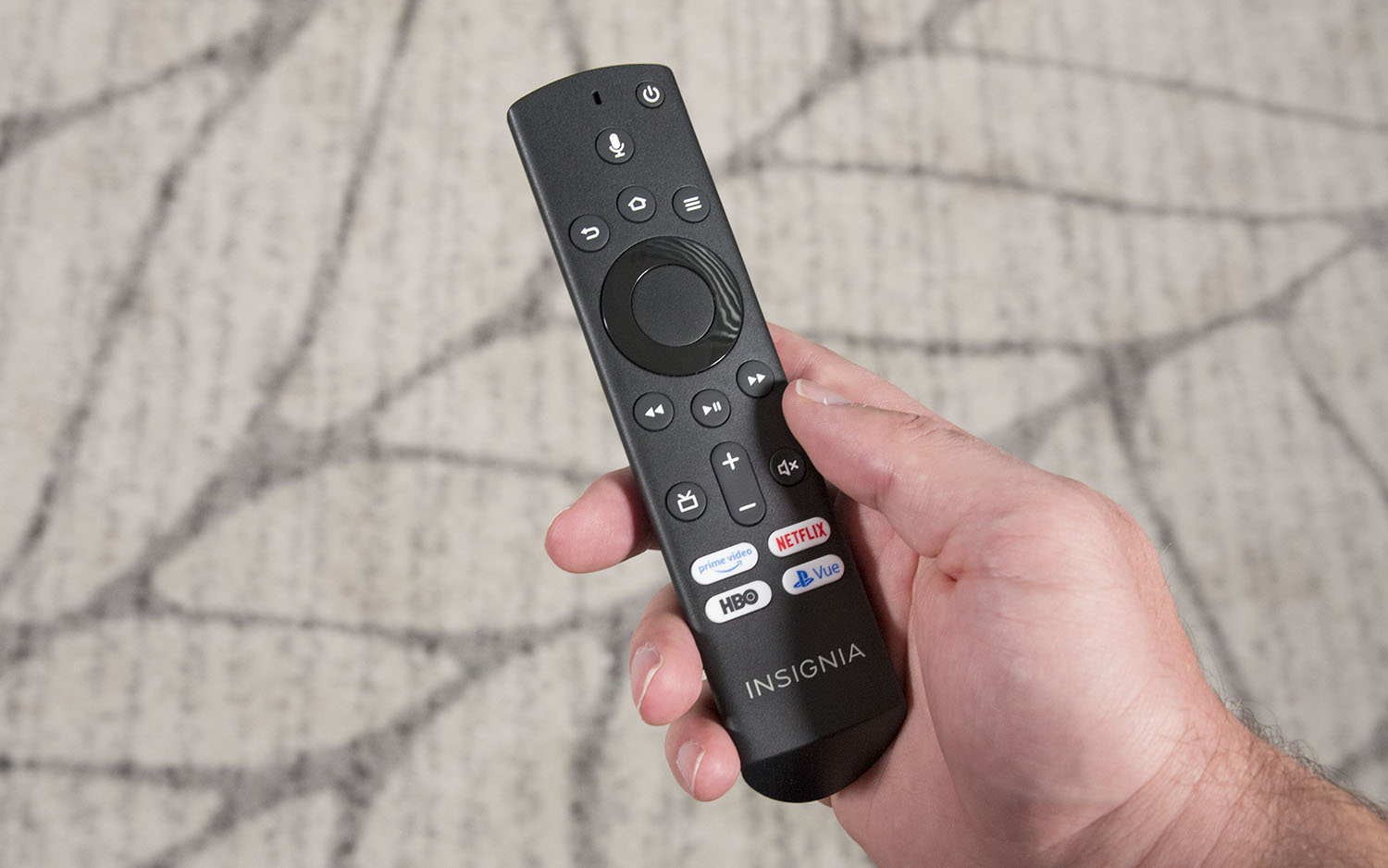
Navigation is done with a ring-shaped directional pad, and the remote's simple interface provides buttons for home, back and basic media control. There are also some TV-specific buttons that you won't find on the regular Fire TV remote, like volume controls and a live-TV button. A quartet of dedicated app buttons is programmed for Amazon Prime Video, HBO, Netflix and PlayStation Vue.
Bottom Line
While I've had reservations about Amazon's smart TVs in the past, the Insignia 43-inch 4K Fire TV Edition (NS-43DF710NA19) is the first one I'd recommend. The combination of a low price and decent (if not category-leading) performance help this set edge ahead of the disappointing Amazon-branded smart TVs we've seen previously.
The TCL 43S517 Roku TV still stands out as our favorite budget 4K TV, mostly for its extensive HDR support and excellent picture quality, but the Insignia manages to match that set in a few key respects. The built-in mic for voice search is nice on the TCL, but it takes on new capability on the Alexa-powered Insignia. And the Amazon Fire TV OS, while not yet a match for Roku's polished interface, does have the makings of a legitimate competitor. A few key updates from Amazon could close that gap in a hurry.
Credit: Tom's Guide
Brian Westover is currently Lead Analyst, PCs and Hardware at PCMag. Until recently, however, he was Senior Editor at Tom's Guide, where he led the site's TV coverage for several years, reviewing scores of sets and writing about everything from 8K to HDR to HDMI 2.1. He also put his computing knowledge to good use by reviewing many PCs and Mac devices, and also led our router and home networking coverage. Prior to joining Tom's Guide, he wrote for TopTenReviews and PCMag.
-
Xalea I just received this TV today. I am shocked at how wonderful it is. The screen, the sound, for less than $200 on Amazon. The UI is wonderful, the remote is responsive to voice and input. It works great (several apps, anyway) with my Echo device in the room. I am completely floored at the quality and user experience of this cheap TV. I would've felt like a fool if I spent more on this, as it's just for my bedroom.Reply -
gfmucci I'm TV shopping and the Insignia Fire got my attention. We're interested in the 55" version. Does that share the same qualities as the 43" version? I like that it has the headphone output, which many lack, and still has a built in tuner. Is the off-center viewing angle as bad and bothersome as the Tom's review suggests?Reply -
Xalea I haven't noticed any issue with viewing the screen off-center. I have it up on the wall in the bedroom (side wall) with an articulating mount and view it from the bed at an obvious angle without any problem at all. It's hilarious to admit but it's probably the best overall TV I've ever owned and I've had some extremely expensive units. No, the blacks and contrast aren't the best ever. But for the price it's simply unbelievable. The menus are great and the system is extremely responsive. It's more responsive than my Apple TV, XBOX One X, or cable box. Very fluid and quick, which is so nice. Yes, the 55" has the 1/8 inch audio out. You could install a bluetooth transmitter (about $35 on Amazon) and use wireless bluetooth headphones with it if you like. It's identical to the smaller units, except it's even thinner. I wouldn't hesitate to purchase this, and for the price you could put one in every room.Reply
The only complaint I've really seen that has any merit is the obvious inclusion of Amazon services. This is an Amazon Fire TV so if you're not in that ecosystem or don't want to be, I wouldn't get it. I have a lot of Echo devices, order from them practically daily, etc. so I'm embedded pretty well in all that and it works great (can use an Echo device to control it or the voice remote it comes with). Some people said there were ads and stuff for Amazon but I haven't seen that at all - I think they were misunderstanding what was being offered on the screen as far as subscribing to Starz, Acorn TV, etc. through the tv itself, which isn't required but is presented as an option when you select those channels. Nothing obtrusive at all about it, and if you do sign up for these (or are already subscribed) it integrates extremely beautifully, even creating a guide of sorts for all your channels. I know I sound like an idiot this tv but that's just how much I like it. Hope this helps! -
KidHorn I bought the 43" version. It doesn't have a great picture, but for the $179 I paid, it's good enough.Reply
One gripe is I use arc to a yamaha receiver and the volume bar for the TV at the top of the screen is constantly popping up. I assume the TV detects minor volume changes and pops up. It's annoying and I don't think there's a way to turn it off. Not sure if this is endemic to all receivers or just my Yamaha.
